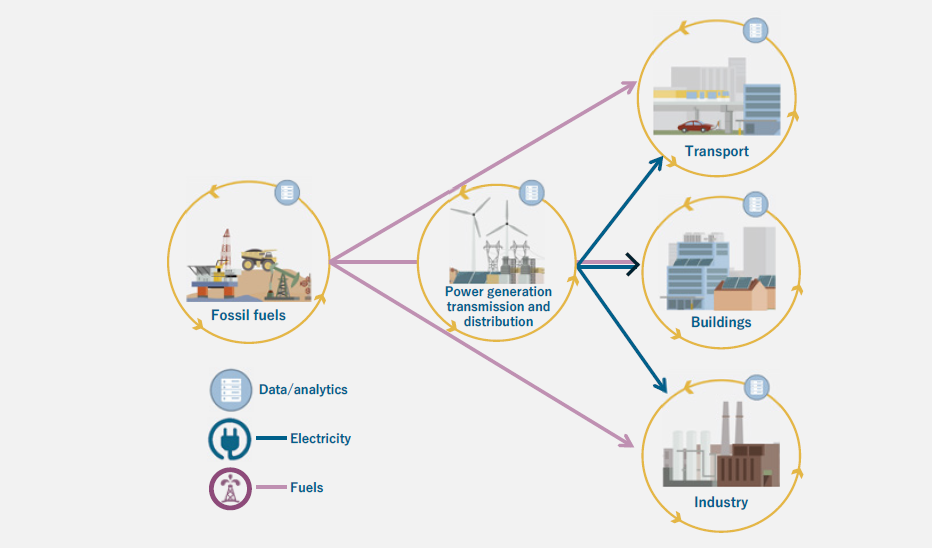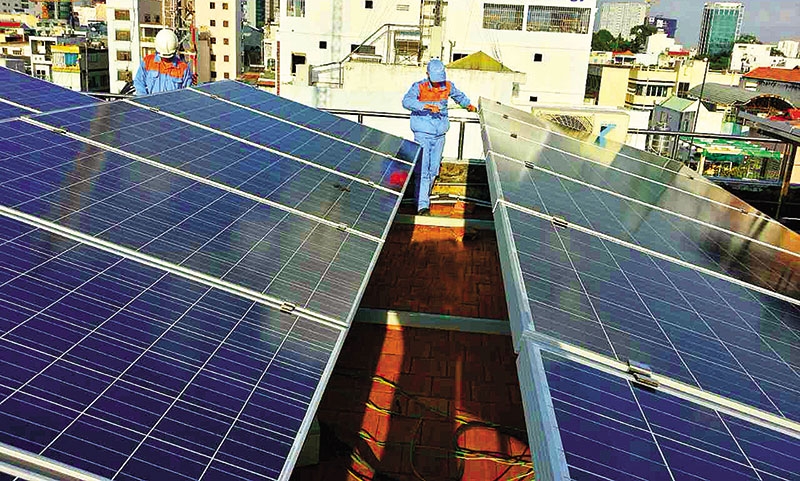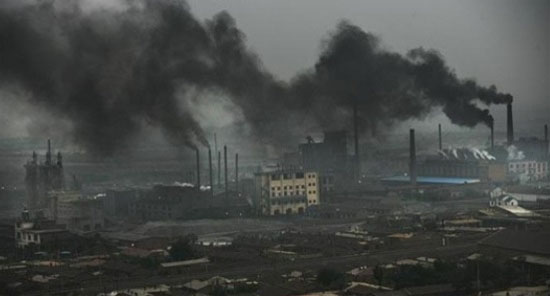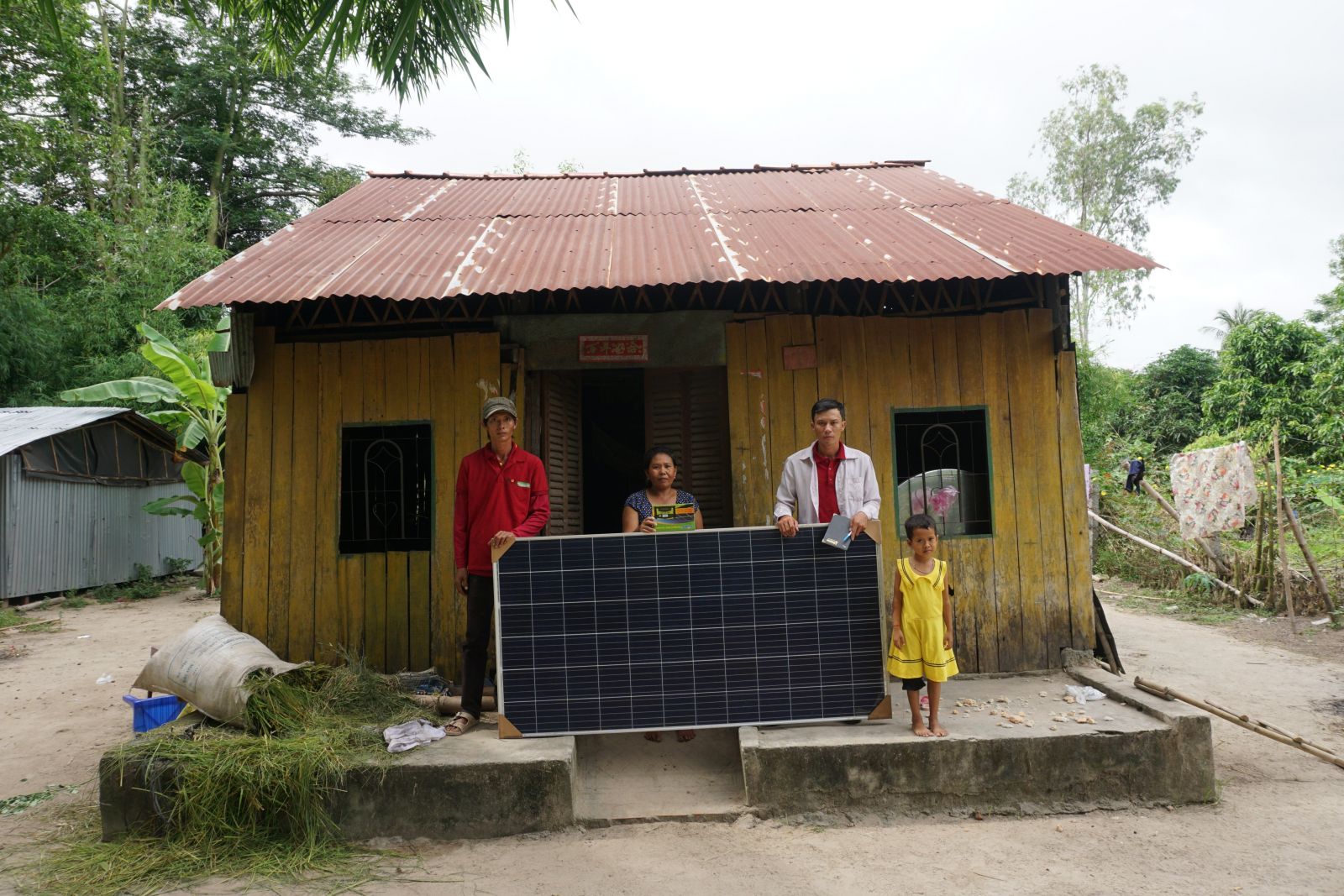
Recommendations on the National Energy Master Plan for the Period 2021-2030, vision 2050
|
Vietnam Sustainable Energy Alliance (VSEA) No.: 01/2021/KN-LM |
THE SOCIALIST REPUBLIC OF VIETNAM |
|
Ref: Recommendations on the National Energy Master Plan for the Period 2021-2030, vision 2050 |
Hanoi, January 11, 2021 |
RECOMMENDATION LETTER
|
To: |
Minister of Industry and Trade Tran Tuan Anh Deputy Minister of Industry and Trade Dang Hoang An Director General Nguyen Viet Son, Oil, Gas and Coal Department |
Vietnam Sustainable Energy Alliance (VSEA) consists of 25 members which are scientific organizations of energy, health, environment, communication and community education for the purpose of promoting sustainable energy development in Vietnam and the Mekong region. VSEA has made proactive recommendations on the energy sector’s policies, including Electricity Law 2012, Revised Power Development Plan VII (PDP VII) 2016, Law on Environmental Protection 2020, PDP VIII and received positive feedback from relevant agencies. On December 11, 2020, the Ministry of Industry and Trade (MOIT) publicized the Draft National Energy Master Plan for the Period 2021-2030, vision 2050 on its official website for opinion polls for local and international agencies, organizations, and individuals. VSEA studied the Draft Plan and organized workshops engaged by experts to collect opinions on the document. Our opinions and recommendations are as follows:
- Strengths of the Draft Master Plan:
- This is the first energy master plan that is inclusive and able to guide component energy plans, including those for coal, oil and gas, electricity, and renewables (REs). This is a commendable and welcome effort by the planning agency. The Draft Master Plan is able to correct a number of shortcomings found in previous sub-sector plans. The Draft gives worth attention and decent concerns to not only energy development but also other issues, including: environment, climate change, prices, markets, savings and efficiency, national and international problems. The Master Plan closely adhere to mid an long term goals set in the government’s guidelines and policies on energy, including Resolution 55 of the Politburo and Vietnam's Renewable Energy Development Strategy until 2030, vision 2050. The Draft Master Plan is feasible and in line with the current situation.
- Energy balance calculation methods: The general calculation method adopted in the Draft Master Plan is a common method for energy master plans, based on assessments of the country's current situation at the time of planning, precise evaluation of national fundamental potentials, assessments of energy demand for the whole economy and for specific industry over a period. Based on the energy balance equation, the lowest cost of the energy system is calculated. The Plan adopts a model for energy optimization by analyzing five options for the energy balance calculation model of the master plan and eleven options for the sub-sector planning of electricity. This is a modern and reliable calculation method. The most important thing is whether the inputs of the model are appropriate or not. Analysis of this issue is presented below.
- VSEA’s proposals and recommendations
- The Master Plan is still based on a traditional mindset characterized by the conventional fossil fuel-based energy system. However, the world's transformational energy systems are based on four pillars: i) Decarbonization; ii) Decentralization; iii) Digitalization; and iv) Electrification. The new mindset should be adopted as a guideline for the Plan to keep up with modern trends.
- In regard to the GDP growth rate, the Plan’s forecast fails take into account the impacts of COVID-19. VSEA recommends prudent considerations of the impacts to ensure that energy demand forecast reflects the current volatilities and helps to avoid the risks of wasting investment in unnecessary energy infrastructure development.
- The imports of primary energy, especially coal, should be minimized; in the meantime, the use of domestic primary energy sources should be boosted so that Vietnam will become an energy exporter in the future. Regarding domestic gas reserves, the total reserves of the Ken Bau and Khanh Hoa oil fields should be added to the national primary energy supply. Both fields started to be explored in 2020 and are not taken into consideration in the Draft Master Plan. Vietnam is found to have high technical potentials of renewable energy, which should bring about can bring about multiple environmental, socio-economic and employment benefits. Nonetheless, the use of the potentials is not considered thoroughly in the Master Plan. Apart from power generation, renewables should be utilized in numerous applications like industry, transport, agriculture, and residential purposes. As for biogas, it is necessary to define specific development goals by phases to exploit this potential source of renewable energy.
- To make a breakthrough in renewable energy development, the Master Plans needs additional potential assessment and introduction of energy storage technologies. Storage batteries, especially Li-ion and Hydrogen batteries which are produced with renewable power at ongoing lower costs, are set to grow rapidly in the coming years, which could change the share of energy forms in the national energy mix. Many regional countries have introduced policies for hydrogen economic development. Vietnam should study and evaluate the potential of hydrogen economy to stay ahead of the trend.
- Coal is identified in the Master Plan as a dominant sector in the national energy development but in fact, coal mining is no longer a high potential and Vietnam is becoming increasingly dependent of imported coal. The global coal industry is also on a downward trend. It is necessary to redefine the future role of the coal sector in order to set appropriate directions and ensure social security for coal workers.
- In regard to the energy market and prices, the Master Plan only considers the market for electricity. Synchronized energy markets for different sectors with a specific schedule and roadmap are required. Based on the roadmap for the energy market, the Master Plan should set out specific policies and mechanisms for implementation. Similarly, for energy prices, it is necessary to have price calculations for each period and to evaluate economic impacts and ensure social security plans. This shall determines the feasibility of the Plan.
- Regarding capital mobilization, capital mobilization channels introduced in the Master Plan are undefined and some sources of capital have even proven to be very difficult to mobilized. As the annual capital requirement for the Master Plan implementation is huge, VSEA recommends modeling a capital mobilization scenario with specific measures for each period to ensure the feasibility of the Plan.
- The Draft National Energy Master Plan only estimates investment costs and fails to identify the socio-economic gains of the chosen scenario. The following factors should be considered: quantification of economic benefits, the number of new employment, human resource requirements and evaluation, supply chain requirements (production - installation - operation - maintenance - fuel exploitation/supply) - financial services - financial markets).
Above are our opinions and recommendations. We hope that they will be taken seriously and reflected in the final Master Plan. To justify the recommendations, we enclose hereunder the Appendices for detailed analysis of the recommendations for your convenience.
We look forward to receiving your feedback on our recommendations and details on the next step of the planning process within ten days.
|
Recipients:
|
Representative of the Vietnam Sustainable Energy Alliance (VSEA) Green Innovation and Development Centre (GreenID)
|
Contact:
Office of the Vietnam Sustainable Energy Alliance (VSEA)
Green Innovation and Development Centre (GreenID)
Mai address: C1X3, 6 Alley, Tran Huu Duc Street, Nam Tu Liem District, Hanoi City
Ms. Nguy Thi Khanh, GreenID Director, cum VSEA Chairwoman
Mobile phone: 0912713229| Email: ntkhanh@greenidvietnam.org.vn
APPENDIX 1
UNDERLYING BASIS OF VSEA’S RECOMMENDATIONS
- Overall judgment
Energy has played an active role in recent years, particularly from 2010 to 2020, fulfilling set targets, facilitating Vietnam’s socio-economic development.
- Between 2010 and 2019, total final energy consumption inched up by 4.3% each year, reaching 61,853 KTOE in 2019, accounting for nearly 68.88% of total primary energy supply (TPES) (89,792 KTOE),
- meeting energy demand for economic expansion with annual GDP growth rate averaging 6.35%.
Great improvements were achieved by 2019 compared to before 2010:
- Energy consumption per capita: 641.1 KTOE
- Energy consumption per unit of GDP: 307.9 KTOE/US$1,000
- Total energy-related CO2 emissions: 262.2 Mt CO2
- Total CO2 emissions per capita: 2,718 kg
- Power consumption per capita: 2,169 kWh
Despite the significant and commendable achievements, major shortcomings remain and need to be addressed in the Master Plan. Due to shortcomings of the 2010-2020 National Energy Development Master Plan, costly adjustments to the Plan were made and Vietnam was faced with difficulties in implementing the Plan. The shortcomings are as follows:
- The 2010-2020 Master Plan was not in line with the actual economic condition and forecast GDP growth at an incredibly high level of 7-9%. As a result, the Plan was adjusted after three years of implementation.
- The global energy development trend was not taken into consideration in the 2010-2020 Master Plan: Vietnam’s energy development plan went against the global switch from fossil fuels to renewables by setting a considerable share target of coal (53%) so it went “bankrupt” in 2018.
- The Plan did not pay attention to the market mechanism and the huge government subsidy for the energy sector in Vietnam.
- Environment was not adequately considered due to lack of support by people and several localities.
- Energy efficiency stayed low and significant energy losses were recorded in production and consumption sectors. Energy loss rates hit 30% (61,853 KTOE/89,792 KTOE = 0.68)
- In short, Vietnam recorded minimal improvements in the energy sector, making it hard for the country to avoid being left behind.
- Issues for consideration in the National Energy Master Plan
- The Master Plan is still based on a traditional mindset characterized by the conventional fossil fuel-based energy system. Adapted from the World Economic Forum (WEF), the transformational energy system is based on four pillars called 3DE = Decarbonization + Decentralization + Digitalization + Electrification. The new system should be adopted as a guideline for Vietnam’s energy development master plan. The role of digitalizing energy system should be underlined to realize three targets: enhancing grid flexibility, boosting the share of renewables, and promoting demand response. They are all urgent targets as there are signs of excessive solar photovoltaics (PV) electricity during low-load hours.
Conventional energy system (Source: IEA, 2020)

Transformational energy system

Decarbonization
Source: Updated from the World Economic Forum (WEF), 2017
< >More precise forecast of energy demand is needed.Energy demand largely depends on socio-economic development forecast, particularly GDP growth estimation over the modeling period. Imprecise projections of GDP growth rates will affect energy demand forecast, which results in material loss.
Average GDP growth from 2020 to 2030 is estimated at 6.42% per annum in the Master Plan. However, further review of the estimation is needed in the context of ongoing COVID-19. In other word, it is advisable to have another scenario taking into consideration COVID-19’s impacts.
< >As shown in the Draft Master Plan, imports of primary fuels, especially coal, will be on the rise while the domestic primary energy potentials are not fully exploited. The planning agency claims that Vietnam will certainly become an energy importing country with the importing ratio of energy mounting from 49% in 2020 to 54% in 2030 before reaching 70% in 2050. The forecast is not well grounded for the following reasons:
< >Coal imports are faced with challenges: Australia, Indonesia, Russia and South Africa are Vietnam’s major coal exporters. Australia and Indonesia are two main coal exporters in the region, registering exporting volumes of 230-330 million tons per year. However, they managed to diversify importing markets to include Japan, South Korea, China, Taiwan, India, making it hard for Vietnam to make up a share of Australian and Indonesian coal imports. In South Africa, The coal sector is dominated by five private companies, accounting for about 85% of total coal production. Due to the absence of clear-cut coal policies in South Africa, the sector’s major strategies are directed and determined by Eskom, the country’s leading coal company. The infrastructure in South Africa is under-developed. Its port system of three ports for coal exports is also privately owned. Coal exports are mainly conducted through the Port of Richards[DE1] Bay, which is unable to operate to its full capacity as the state-owned railway system remains limited in terms of transport capacity (with only one train track). In the meantime, Russia has a complicated investment environment. Coal exploitation costs are sometimes too high as the mining fields are far from the consumer market and the fuel must be transported to sea ports by train. The country’s major seaports include those to the East of the Sea of Japan, to the Northwest near Scandinavia and at the Sea of Azov. Mining fields in Russia are far from major sea ports, pushing up substantially transport costs, especially in the Kuzbass and Kansk-Achinsk coal basins. A limited railway system connecting coal basins and sea ports also prevents Russia from expanding coal export activities.
Vietnam’s coal import infrastructure is also under-developed: There are few systems of ports for coal imports, deep water ports, and vessels in Vietnam. Its financial resources are also limited. Assuming that coal prices hover at US$100, Vietnam’s coal imports are estimated at US$4.6 billion,US$8.3 billion and US$15.7 billion by 2020, 2025 and 2030, respectively. Investing in coal fields are expensive: it costs US$2.45 billion investing in a coal field and another US$8 billion in railway transport. Freely-traded coal is expensive with unstable supply. Coal buyers are often forced to buy at high prices when coal supplies stay low.
Coal import and offshore risks
Importing a large volume of coal via sea transport over a distance of 2,000 to 5,000 kilometers is faced with numerous risks such as natural disasters, pirates, and regional conflicts in the sea. Energy has been taken as an instrument in time of wars, which is clearly demonstrated in the 1974 oil crisis or via disputes over Iranian Strait of Hormuz and the East Sea.
< >Unwarrantable assumptions about the potentials of the primary energy sources of oil and gas and unupdated data are found in the Master Plan. Gratuitous assumptions of the 2010-2020 Master Plan that local oil and gas supplies would decline between 2010 and 2019 resulted in the fact that near-term gas supplies for the implementation of PDP VII fell short and Vietnam had no choice but to import liquefied natural gas (LNG) to offset the deficit of this fuel the country’s Southeast. The Ken Bau oil field of substantial reserves is reportedly discovered in Vietnam and may be exploited as soon as in 2023. The Ken Bau oil and gas field is located off Vietnam's northern continental shelf, in the Red River basin, 65 km from the nearest mainland in Quang Tri Province and about 86 km from Da Nang. It is regarded as a large-reserved oil and gas field in industry’s history. Eni Vietnam B.V Operator carried out 2 seam space tests, collecting extensive data on fluid samples showing significant hydrocarbon accumulation at the Ken Bau discovery, estimated from 7 to 9 trillion cubic feet (TCF) of natural gas on the spot and about from 400 to 500 million of condensate barrels.[1] In addition to the Ken Bau field (located in the Northern Gulf), considerable gas reserve was also discovered in Khanh Hoa. Both fields are expected to make huge contributions to the national energy balance, be able to meet sufficient energy demand and even export pusposes. The energy potentials of the newly discovered fields are not taken into account in the Draft Master Plan.The potentials of renewable energy exploitation in the Plan are much lower than the actual potentials and renewables are only considered for power generation, not for other applications in such sectors as transport and agriculture. [2]. The study shows that solar dual-use provides multiple socio-economic benefits that are mainly based on the key concept of the increased land productivity of the combined system, compared to the single-use of the same area of land. Further benefits of solar dual-use for farmers and the public include energy cost savings (solar self-consumption), additional income of local farmers with potentially higher investments and tax revenues, improved marketing opportunities and competitiveness (sustainable production/supply chain), potentially improved agricultural practices, the reduction of (peak) energy demand, a reduction of CO2 and hazardous local emissions from conventional thermal power plants (such as coal), and the development of a more competitive sustainable agricultural sector in general (for domestic and export markets).
Certain REs boast high potentials. For biogas, it is evaluated to be potential in the Master Plan but there is a need for detailed planning for biogas with specific development target(s) in each period.
The livestock industry generates about 73 million tons of solid wastes (dry manure, food waste) and 25-30 million cubic meters of liquid wastes (liquid manure, animal urine, and farm wash water) every year. 50% of the solid wastes (36.5 million tons) and 80% of liquid wastes (20-24 million cubic meters) are exhausted directly to the environment or go on to be used untreated, causing severe environmental pollution. If there are no improvements to the monitoring and use of unprocessed manure, its CO2 emissions will hit about 0.24 tons or 17.52 million tons of CO2, -eq will be emitted to the atmosphere considering the total volume of livestock wastes. On the contrary, once processed with biogas technologies based on effluent recirculation of feedstock, the wastes are estimated to generate 2.19 billion cubic meters of biogas (equivalent to 1,335.9 million liters of natural gas; 1,598.7 million liters of gasoline; 13,578 million kWh of electricity; or 2,409 million liters of alcohol); and over 60 million tons of high quality organic fertilizer (worth about VND 90,000 billion) for green agriculture.
We now have the pro-agriculture biogas technology based on effluent recirculation of feedstock (Patents No. 0020468 and 0020872). It resolves the shortcomings of traditional biogas technologies, prevents environmental pollution and has double capacity and efficiency compared to its traditional counterparts. The new biogas technology converts agricultural residuals into at least two (02) useful and green products (i.e. clean fuels (biogas) and micro-organic fertilizers) as feedstock for a new low-carbon production cycle, enhancing the added value of chain of farmers’ livelihoods. The new pro-agriculture biogas technology also make it possible to recycle and reuse organic household waste and agricultural waste; better protect the environment, tackle certain socio-economic issues; and develop new rural areas, model villages and gardens.
< >The potentials of energy storage technologies are not considered in the Draft Master PlanStorage batteries The development of storage batteries, especially Li-ion batteries, in the next decade could change the shares of energy forms in the national energy mix. Therefore, it is necessary to have an assessment study on battery storage.
< >HydrogenThe cost of supplying hydrogen from renewables has been decreasing and the trend is projected to continue in the future. We now observe the applications of hydrogen in other sectors, including automotive, energy-intensive sectors, transport, and aerospace. Green hydrogen produced by using renewable electricity is expected to grow rapidly in the coming years. Therefore, hydrogen should be examined and evaluated in the Master Plan.
< >Environmental pollution and health impacts are not adequately considered. The mechanism of environmental protection and sustainable development in Episodes 1-3, Chapter 12 is sketchy. They mainly mention the environmental impacts of coal mining. This part needs greater attention and a strong focus. Emergency warnings are given on dust pollution, especially in big cities. The air quality index in the capital city of Hanoi has been at unhealthy levels for many days. Nonetheless, many coal-fired power plants are planned to be developed in the Red River Delta region. In June 2020, GreenID conducted and launched the report on ‟Impacts of coal-fired power on air quality and health in Vietnam”. The report reveals that commissioned coal-fired plants were responsible for approximately 4,359 immature deaths in 2017. The number is projected to increase to 28,136 by 2030 as per the Coal Development Scenario of the Revised PDP VII. The Red River Delta region is revealed to be affect the most and Hanoi is to undergo the most severe health impacts from commissioned coal-fired power plants.
< >There is no concrete solutions to energy prices and marketsEnergy prices and markets are vital to the implementation of the Master Plan. According to Resolution 55, market mechanism must be respected and reflected. Therefore, major questions are: What are the projected energy prices for each period? Are the prices affordable? Considering the current subsidy for 80-90% of households with electricity consumption of no more than 200 kWh, what are the subsidy plans in the coming years? Therefore, to ensure the feasibility of the Master Plan, it should supplement social impact assessment, comprehensive evaluation of the advantages and disadvantages of the Plan and strategic environmental impact assessment.
Although the Master Plan is developed for a time of a full-scaled, synchronized, open, transparent and equal energy market It fails to determine the time to form a full-scaled energy market. Successful implementation of the Plan hence becomes impossible. It is necessary to have a road map for the equitization of state-owned energy corporations, possible elimination of monopoly, and elimination of national energy subsidies.
< >Secured investment sources are not definedInvestment demand as per the Master Plan is huge, averaging nearly US$20 billion per year until 2030. Capital mobilization solutions only give general directions such as diversifying investment sources, sourcing domestic capital (that of domestic corporations). The Plan underlines the mobilization of private and foreign capital but fails to make detailed predictions of the mobilization volumes, the feasibility of the solutions and there are no plans for adjustments to match capital demand and mobilization potential. Therefore, the capital mobilization plans for the energy sector are not feasible.
Pham Xuan Hoe, former Deputy Director of the Banking Strategy Institute, State Bank of Vietnam (SBV), laid out the following recommendations:
< >The source of ODA must be identified clearly in the Plan. As a middle-income country, Vietnam now finds it hard to have ODA grants and tends to be offered more stringent conditions and high interest rates. In some cases, lenders tend to impose their environmentally detrimental and outdated technologies as a condition for an ODA.The proportion of capital mobilization from government bonds and government-guaranteed bonds must be determined. What are the capital contributions of state-owned enterprises (SOEs) like EVN, TKV, and PVN? As per the current regulations on financial management in SOEs, it is difficult and impossible to use their capital to invest in new energy projects. State budget for development investment remains minimal as the annual state budget deficit remains over 4% of GDP. Moreover, this source of capital is allocated for other important infrastructure sectors so the available volume allocated for energy is low.It is vital that the Master Plan clearly reflect the views of the Politburo stated in Resolution 55 on socialization of investment capital for the development of the energy sector of Vietnam. The Master Plan should also include additional fiscal policy solutions for mobilizing capital for the development of the energy sector, adopting taxes and fees to encourage economic sectors to invest in green energy development, green expenditure policies, prioritizing the purchase and use of clean energy, and the SBV's green credit policy for the renewable energy sector as specified in Resolution 55.However, the national PDP tends to facilitate the development of new coal-fired power projects. Apart from impacts on the environment, health and energy security, this direction will limit financial access due to the strong global movement of divesting from coal-fired power. According to statistics of the Institute for Energy Economics and Financial Analysis (IEEFA), since 2013 there have been 137 organizations, including banks, insurance companies, property management companies and investors, announcing tight financial policies for coal-fired power. The movement is also joined by 1,237 organizations of the governments, charities, education, health, retirement, religion; companies and corporations. Divestment value from coal of these organizations amounted to US$14.14 trillion. Individuals also joined the movement with more than 58,000 participants and divestment value of about US$5.2 billion. The movement is increasingly expanding. In 2013, only European financial institutions introduced divestment policies from coal; in recent years, Asian financial institutions, including those in Japan like Mizuho Financial Group, have taken a similar move. Most recently, the Japanese government announced to halt granting ODA funds for coal power projects abroad.
A series of coal-fired power projects have been delayed due to finance access problems. This will continue to be a challenge in the future if no adjustments are made in the Master Plan.
< >The Master Plan only estimates investment costs and fails to identify the socio-economic gains of the plan.How much are direct and indirect economic gains (in USD) brought about by the Master Plan?How many jobs are to be created as a result of the Master Plan? What are the employment opportunities specifically? What preparations should be made in terms of human resources? Is local education and vocational training able to meet the human resource requirements of the Master Plan?What do local supply chains do to facilitate the Plan implementation (production - installation - operation - maintenance - fuel exploitation/supply - financial services - financial markets, etc.)?
APPENDIX 2
EXPERTS AND RESEARCH GROUPS CONTRIBUTING TO THE RECOMMENDATION LETTER
|
No. |
Full name |
Expertise/Title |
|
1 |
Dr. Ngo Duc Lam |
Energy expert |
|
2 |
Nguyen Tien Chinh |
Coal expert |
|
3 |
M.S. Pham Xuan Hoe |
Financial expert |
|
4 |
Nguyen Dang Anh Thi |
Energy and environment expert |
|
5 |
Nguy Thi Khanh |
Director, Green Innovation and Development Centre (GreenID) |
|
6 |
Tran Dinh Sinh |
Technical Consultant, GreenID |
|
7 |
Nguyen Thi Ha |
Manager of Sustainable Energy Program, GreenID |
|
8 |
Nguyen Thi Hang |
Clean Air and Water Program Manager, GreenID |
|
9 |
M.S., Dr. Tran Tuan |
Director, Research and Training Centre for Community Development (RTCCD) |
|
10 |
Nguyen Hong Son |
Director, Gardening Expansion Center |
|
11 |
Mai Thi Dan |
Deputy Director, Institute of Natural Resources, Environment and Community Development (IRECO) |
|
12 |
Mai Phan Loi |
Science Council Chairman of the Center for Media in Educating Community (MEC) |
|
13 |
Dang Dinh Bach |
Director, Law and Policy of Sustainable Development Research Center (LPSD) |
|
14 |
Nguyen Thi Ngoc Tham |
Program Manager, LPSD |
|
15 |
Phan Thu Thao |
Legal Team Leader, LPSD
|
[1]Vietnam’s Energy. Ken Bau Field - a Historical Discovery of Vietnam's Oil and Gas industry. 2020. Retrieved from: http://nangluongvietnam.vn/news/vn/dau-khi-viet-nam/mo-ken-bau-phat-hien-lich-su-cua-nganh-dau-khi-viet-nam.html
[DE1]Please add "s" to "Richard" to have the correct name of the port.







.png)
